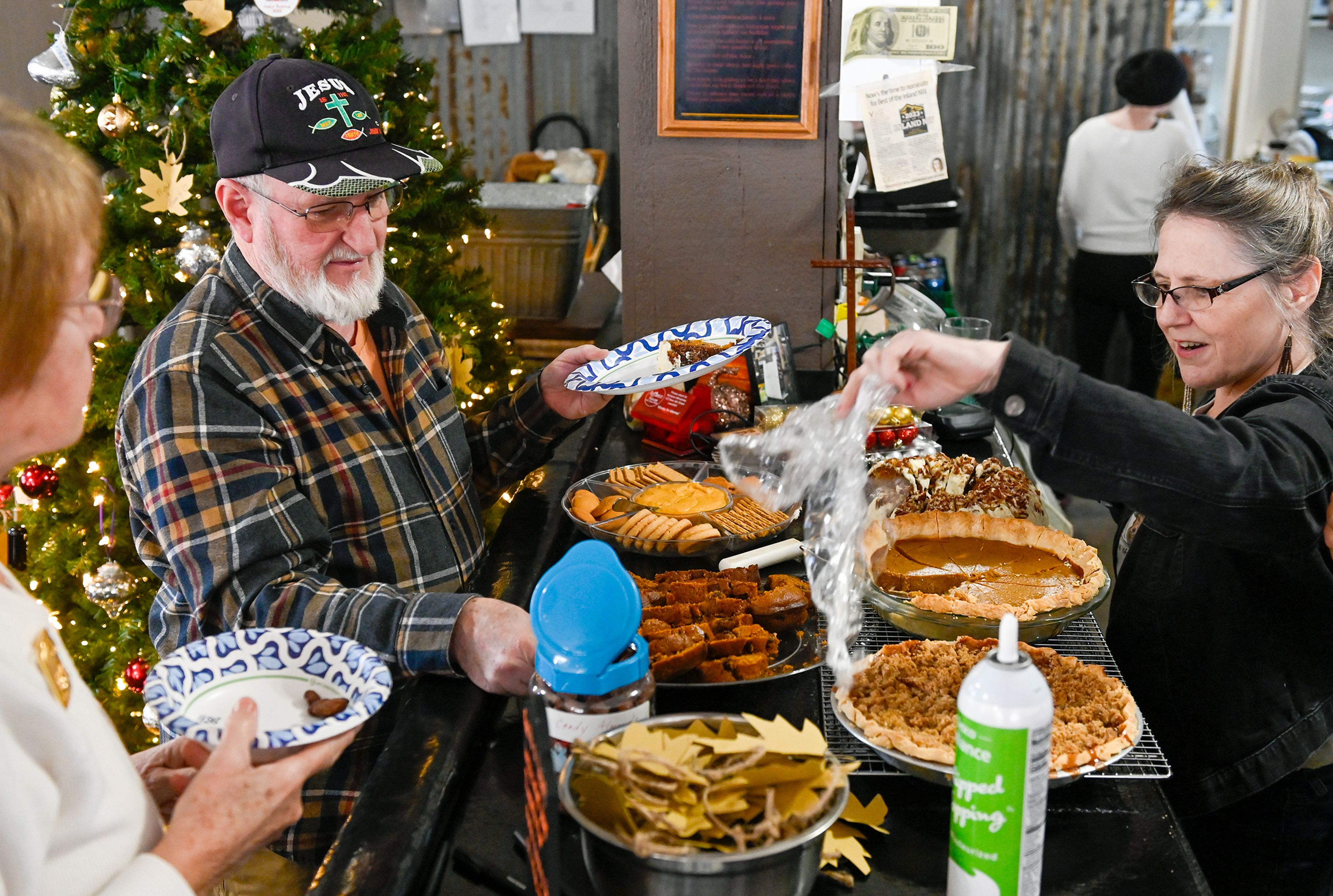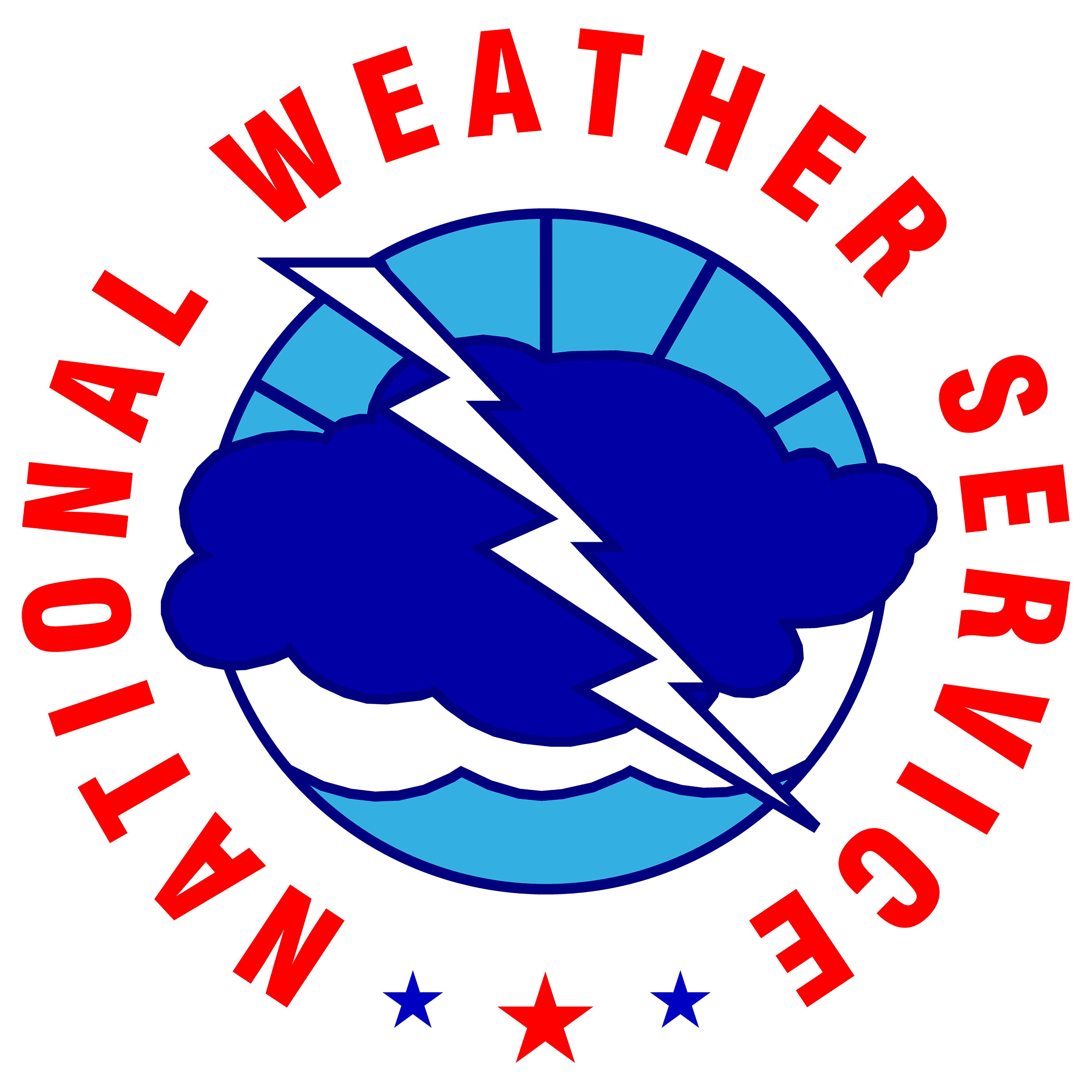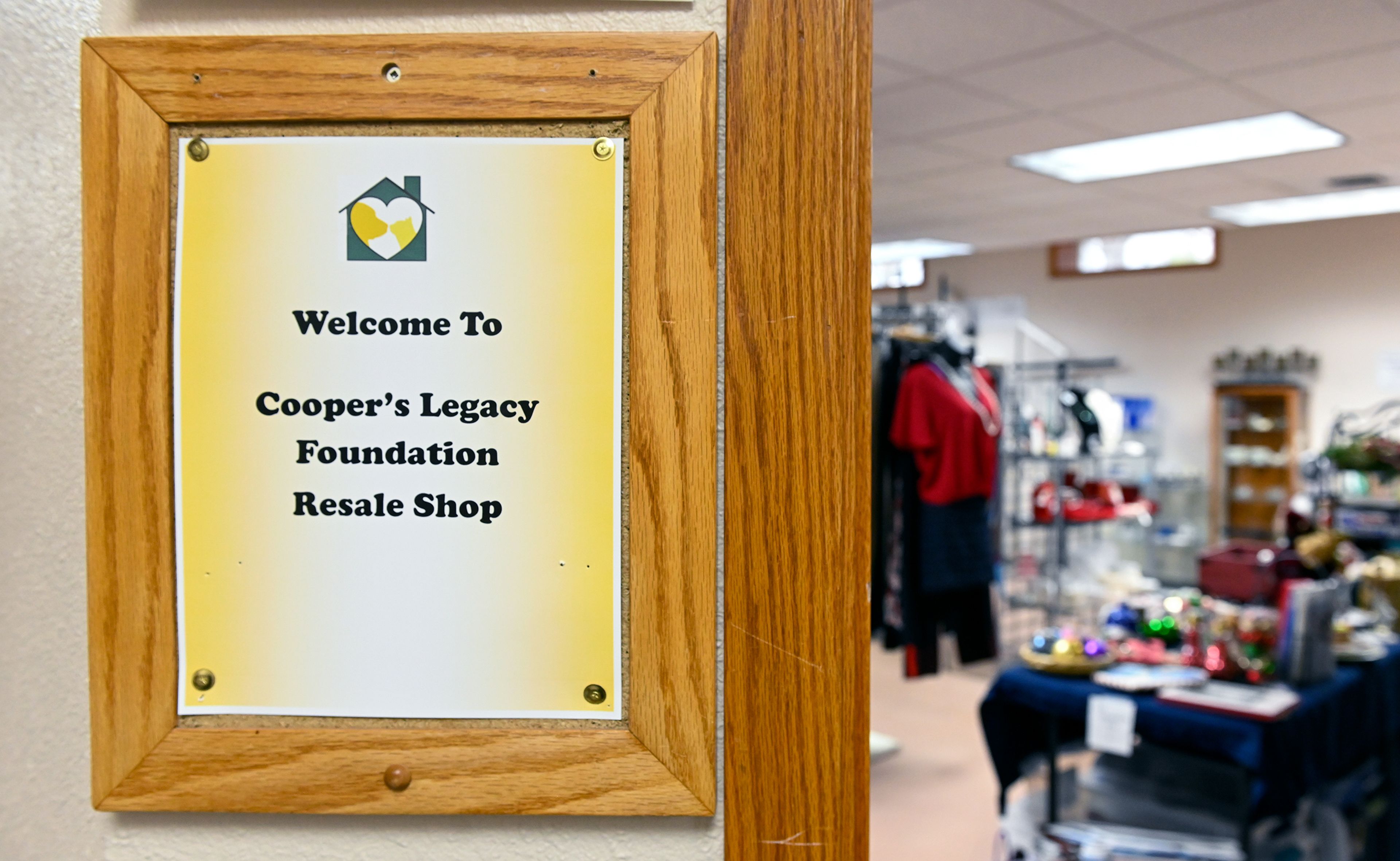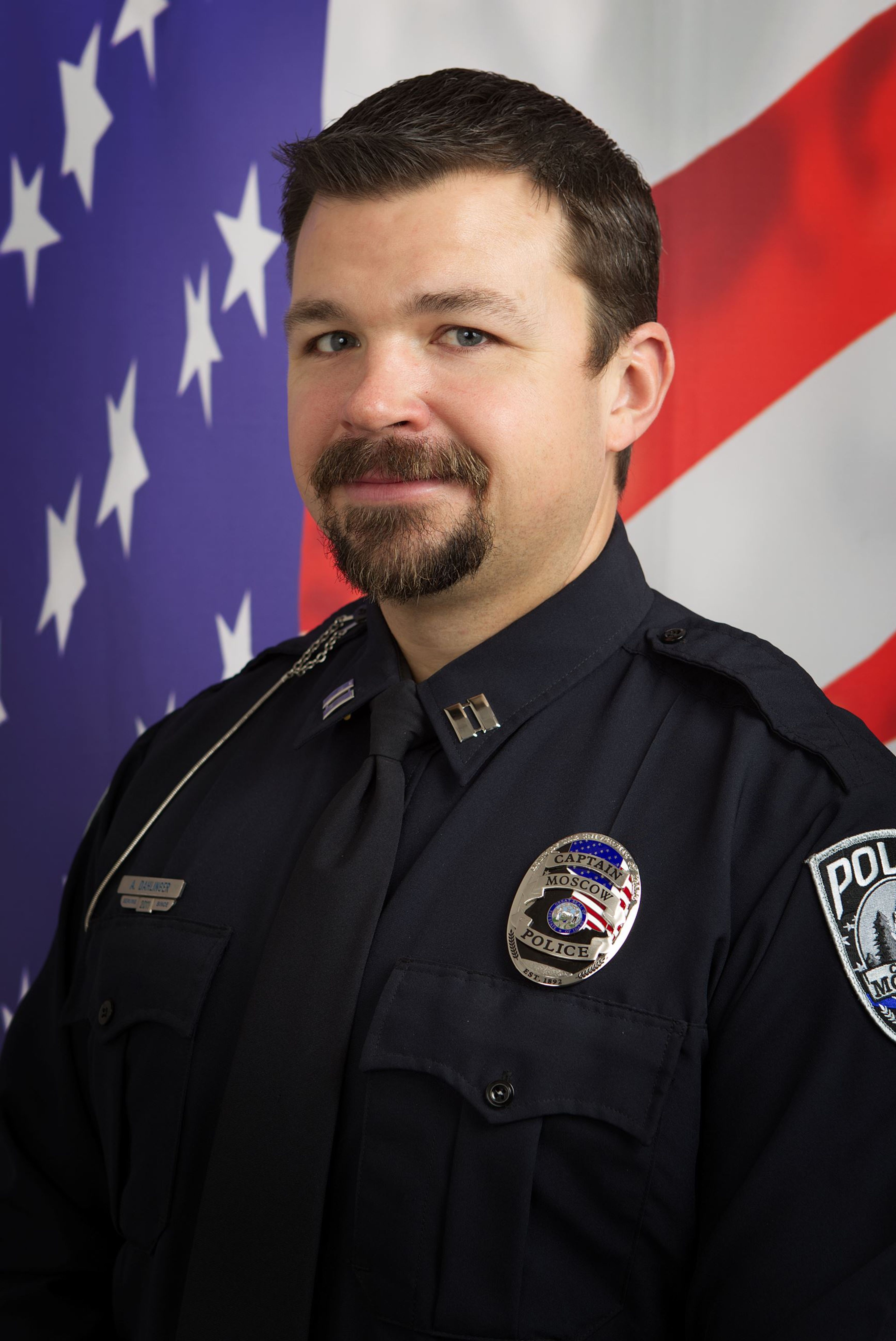HISTORIC RIVER CROSSING WAS USED BY NEZ PERCES JAWBONE FLATT GAZETTE # 449
This is a continuation of a series on the location and origins of names of places in Asotin County. This is the 18th installment.
Red Wolf Crossing A historic river crossing place used by Nez Perce Indians to ford the Snake River is west of the mouth of Alpowa Creek on the south side of the river, and south of the mouth of Steptoe Canyon on the north side. The safest time to use the crossing was in summer months when the river level was low. Since the water was backed up behind Lower Granite Dam Feb. 16, 1975, the old Indian crossing has been beneath 30 to 40 feet of water.
Red Wolf Crossing Bridge A low-profile bridge crosses the Snake River from the north end of 15th Street at Clarkston to the Whitman County side of the river, near the Port of Wilma. The high bridge, built to allow the passing of all water traffic, was dedicated Oct. 19, 1979.
Reservoir Road A diagonal road reaches from 12th Avenue in the extreme southwest Clarkston Heights to Pomeroy Gulch in east central Clarkston Heigths. The road parallels the buried 4-foot diameter wooden pipeline that brought water from Asotin Creek to the reservoir that was in Pomeroy Gulch from 1907 to sometime shortly after 1964.
Rice Creek Section 13, Township 7N, Range 45 E.W.M. A one-mile long creek drains from high on the north side of the Grande Ronde River canyon into the Shumaker Grade gulch, about midway down the grade. It is believed to have been named for an early settler named Rice.
Ridgeview Court A short street that is an eastern extension of Fourth Avenue reaches almost to Ridgeview Drive on the eastern end. It is in the east central part of Clarkston Heights. It was so named because of its closeness to the top of the ridge that is an excellent viewpoint of the entire Lewiston-Clarkston Valley.
Ridgeview Drive A residential street in east central Clarkston Heights reaches from Shaun Drive on the west to Hillcrest Way on the southeast. Residences on both sides of the street have high-up views of the valley.
Riverside Drive It is the road and highway that starts near and beneath the west end of Southway Bridge in southern Clarkston and parallels the Snake River to end at the entrance to the city of Asotin at the bridge crossing Asotin Creek.
Riverview Blvd. This eastern Clarkston residential street would normally have been known as First Street. It is the easternmost city street that reaches from Fair Street on the north to Chestnut Street on the south.
Road Gulch In northern Wallowa County, it joins Horse Creek in Section 30, Township 47 E.W.M. a short distance south of the Washington-Oregon line. A road came down Road Gulch to the lower Joseph Creek area in the early days.
Road Ridge Sections 29 and 31, Township 7N, Range 43 E.W.M. It is a ridge near the lower southern part of the Mount Misery to Grouse Flat grade, which the road goes down.
Roberts Road Sections 26 and 28, Township 9N, Range 44 E.W.M. An east to west road in the Cloverland area, it reaches from Back Road on the west to Cloverland Road on the east. It was named for former residents George and Ollie Roberts, who lived along the road.
Robinson Gulch Sections 2, 3 and 10, Township 10N, Range 44 E.W.M. It is a branch of Alpowa Creek, with Palmer Ridge on the north side and Knotgrass Ridge on the south side. It was named for Thomas D. Robinson, an early rancher there.
Roche Spring Section 34, Township 9N, Range 44 E.W.M. It is a spring near the foot of and to the south of Smoothing Iron Grade. It is believed to have been named for an early day settler there.
Rockpile Gulch Township 9N, Range 45 E.W.M. It is a gulch about six miles long that heads north of the town of Cloverland and joins George Creek in Section 3, Township 9N, Range 45 E.W.M. It was named for the Indian-made rockpiles that were there in the early days of settlement. The rock cairns were known as Indian Post Office. According to legend, the Indians left messages by piling rocks in certain ways.
Rocky Hollow Section 5, Township 8N, Range 46 E.W.M. It is an area along State Highway 129 about six miles north of Anatone, where the road crosses the rocky, southern end of Ayers Gulch. On the south side of the road is the farmstead of the historic Benedict Ranch, where Herbert D. Benedict settled about 1900.
It was later the headquarters of ranchers Byron and Nellie Benedict. Now the third generation of the family, Robert (Bud) and Helen Benedict, own and operate the ranch where a sign bears the legend ''Rocky Hollow Ranch.''
Rogersburg Section 13, Township 7N, Range 46 E.W.M. It is a town on the southwest side of the junction of the Grande Ronde and Snake rivers in the southeastern part of Asotin County. Founder and namesake of the town was G.A. Rogers, who, with his brother, had a large land and mining interest in the area.
A post office was there from 1912 until 1939 and a school from 1912 until 1923. During many years it was a part of the Tippett Ranch and the only residents there were Don and Betty Tippett Fouste. Now there are a number of homes there but few year-around residents.
Rolling Hills Court, Drive and Lane These are residential streets that reach both east and west from Florance Lane in the extreme northwestern part of Clarkston Heights. This is a growing residential area that 20 years ago was wheat fields. It was named for the gently rolling terrain.
Round Prairie and Round Prairie Spring Section 11, Township 8N, Range 43 E.W.M. It is a large, round meadow high on the upper Smoothing Iron Ridge ciricled by trees. It is about one mile south of the old Horak Ranch in the Umatilla National Forest. Corrals there were used at one time for gathering cattle by the ranchers pasturing the forest.
In early days it was a favored camping place for the Nez Perce Indians who were in the area during summer months hunting and gathering roots.
Roup Road Township 9N, Range 44 E.W.M., in the mid-Cloverland Flat area. Roup Road runs east from the town of Cloverland for about two miles, past the Cloverland Cemetery, where it ends at Johnson Road. It was named for early day and longtime settler brothers George and Howard Roup. Both were also prominent in county and state affairs.
Roupe Brothers Warehouse and Windmill Section 31, Township 9N, Range 47 E.W.M. The Roupe brothers, Jim and Bert, who were early day residents of the Grahams Landing area south of the mouth of Couse Creek along the Snake River and about 12 miles south of Asotin, built a large windmill that pumped water from the river to irrigate their orchards and crops. They also built and operated a large grain warehouse along the river to store grain to be loaded on steamboats when they came up the river.
Roupe burial site In the southeastern one-quarter of the northwestern one-quarter of Section 31, Township 9N, Range 47, it consists of two graves next to the hill on the west side of Graham's Landing area north of the mouth of Couse Creek and a quarter of a mile south of the Oxil Hendrickson house.
Buried there are the pioneer parents of Jim and Bert Roupe and Mrs. Emmett Earl. Ruth Roupe, who was born May 8, 1838, died June 5, 1884, and her husband, Ezekial Roupe, who was born April 8, 1836, died June 1898. There is little left at the burial site to mark it other than part of the former fence that surrounded it.
Rubenser Ridge This is a vast ridge that reaches from Asotin Creek on the east to the Pleasant Ridge area of Peola on the west. Bordered on the north by Palmer Gulch and on the south by Dry Gulch, it is a hilly area covered with deep bunchgrass on the hills and farmland on top of the ridges. It was named for early settlers there, Lewis and Johanna Rubenser.
Ruchertsville It is the early day name of the bench, now known as Mountain View, overlooking the Grande Ronde River. The name came from the Fred Ruchert family who settled there in the early 1880s.








